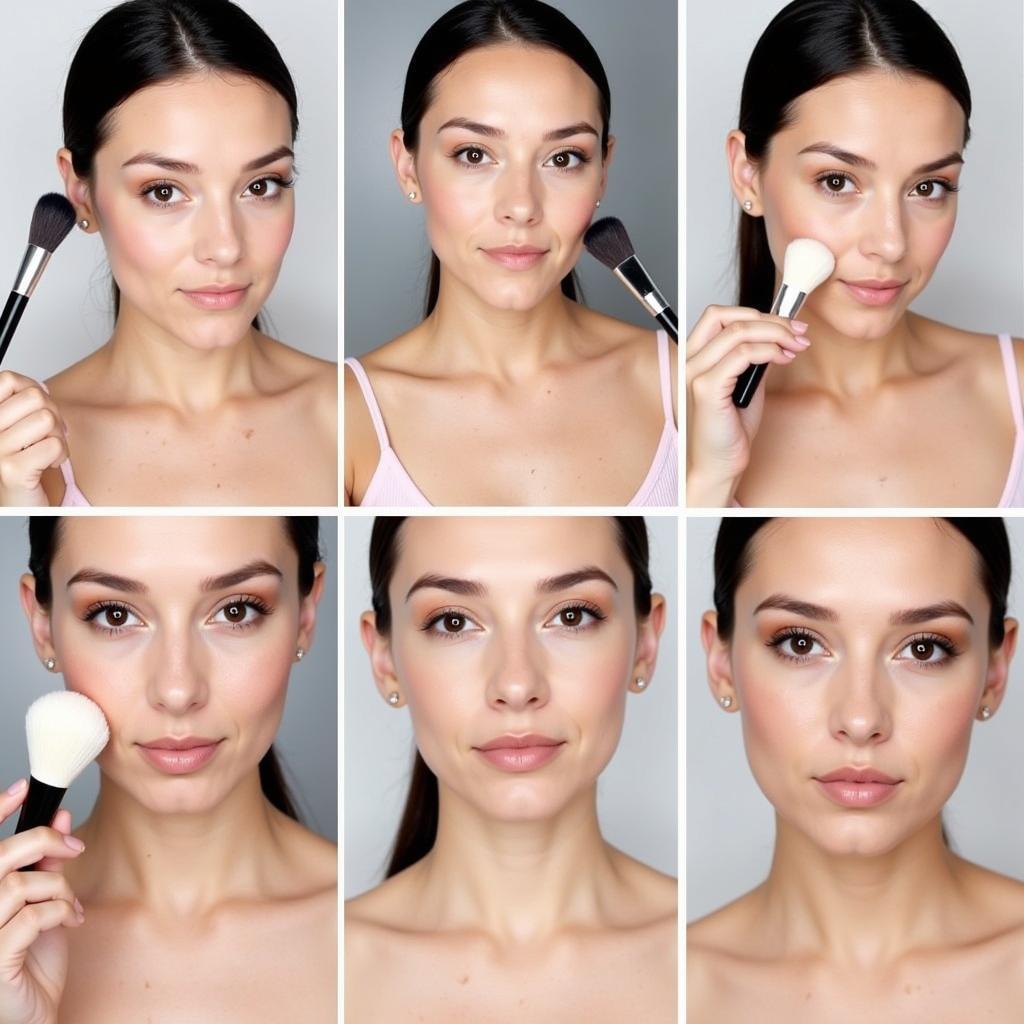A color corrector is a targeted makeup product designed to neutralize unwanted skin discolorations. It works by using the principle of color theory, where opposite colors on the color wheel cancel each other out. Instead of layering on foundation to mask imperfections, color correctors address the underlying issue, resulting in a more natural and flawless finish.
Understanding the Basics of Color Correctors
Color correction goes beyond just covering up blemishes. It’s about strategically using complementary colors to neutralize specific skin concerns. Whether you’re dealing with redness, dark circles, or hyperpigmentation, a color corrector can help create a balanced and even skin tone before applying foundation. This technique allows you to use less foundation, resulting in a lighter and more natural look. Want to learn more about applying color corrector? Check out how to apply color corrector.
How Does Color Correction Work?
Color correction utilizes the color wheel to cancel out unwanted hues. For example, green neutralizes redness, peach and orange counteract blue and purple tones (often seen in dark circles), and lavender brightens dull or sallow skin. By applying these correctors to specific areas, you create a blank canvas for your foundation, allowing it to enhance your natural complexion rather than mask imperfections.
Choosing the Right Color Corrector for Your Skin Tone
Choosing the right color corrector depends on your specific skin concerns and undertones. While green is universally used for redness, the shades of peach, orange, and yellow can vary depending on your skin tone. Lighter skin tones often benefit from lighter peaches and pinks, while deeper complexions may require richer oranges and corals. For advice on using green color corrector, see how to use color corrector green.
What Color Corrector for Dark Circles?
Dark circles are a common concern, and the best color corrector depends on the undertone of the discoloration. Blue-toned dark circles benefit from peach or salmon shades, while purple-toned dark circles are best neutralized with orange or yellow correctors. For a comprehensive guide, visit how to use color corrector for dark circles.
Applying Color Corrector Like a Pro
The application of color corrector is just as important as choosing the right shade. Apply a small amount directly to the area of concern and blend gently. Avoid rubbing, as this can disrupt the correction and make blending uneven. Remember, less is more. You can always build up coverage if needed. You can learn more about where to apply color corrector by visiting where to apply color corrector.
How To Use a Color Corrector: A Step-by-Step Guide
- Cleanse and moisturize your face.
- Apply primer to create a smooth base.
- Apply a small amount of color corrector to the targeted area.
- Blend gently using a tapping motion with your fingers or a damp sponge.
- Apply foundation over the corrected area and blend seamlessly.
- Set with powder for a long-lasting finish.
 Applying Color Corrector: A Step-by-Step Guide
Applying Color Corrector: A Step-by-Step Guide
Color Correction vs. Concealer: What’s the Difference?
While both color correctors and concealers are used to cover imperfections, they serve different purposes. Color correctors neutralize discoloration, while concealers cover up blemishes and imperfections after color correction. Think of color correctors as the first step in creating a flawless base, and concealers as the finishing touch. More information about color corrector makeup can be found at what is a color corrector makeup.
Expert Quote: “Color correction is the secret weapon for achieving truly flawless skin. It’s about addressing the root of the problem, not just masking it,” says renowned makeup artist, Sarah Johnson.
Expert Quote: “Using a color corrector can drastically reduce the amount of foundation you need, leading to a more natural and radiant complexion,” adds leading beauty consultant, Emily Carter.
Conclusion
Color correctors are invaluable tools for creating a flawless makeup base. By understanding the principles of color theory and choosing the right shades for your skin concerns, you can achieve a more even and natural-looking complexion. Don’t be afraid to experiment and find what works best for you. With a little practice, color correction can become an essential part of your daily makeup routine.
FAQ
- What is the best color corrector for redness? Green.
- Can I use color corrector without foundation? Yes, but it’s more effective under foundation.
- How do I apply color corrector? Apply a small amount to the affected area and blend gently.
- What is the difference between color corrector and concealer? Color correctors neutralize discoloration, while concealers cover blemishes.
- Do I need different color correctors for different skin concerns? Yes, different colors target different discolorations.
- What if I use the wrong color corrector? It may not effectively neutralize the discoloration and could create a strange hue.
- Can men use color correctors? Absolutely! Anyone can benefit from color correction.
Need More Help with Color Correction?
For personalized advice and expert assistance, contact us at Phone Number: 0373298888, Email: [email protected] or visit us at 86 Cau Giay, Hanoi. We have a 24/7 customer service team ready to help.

